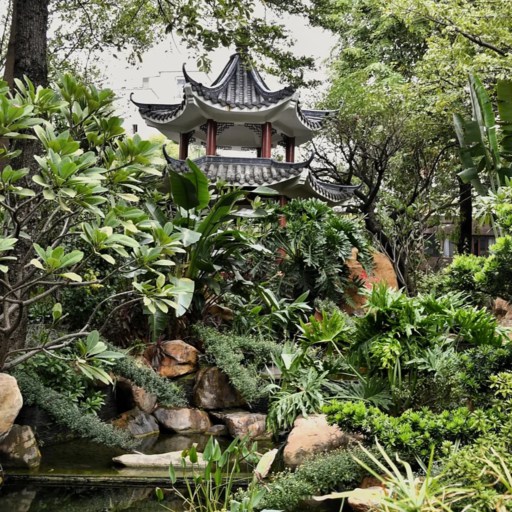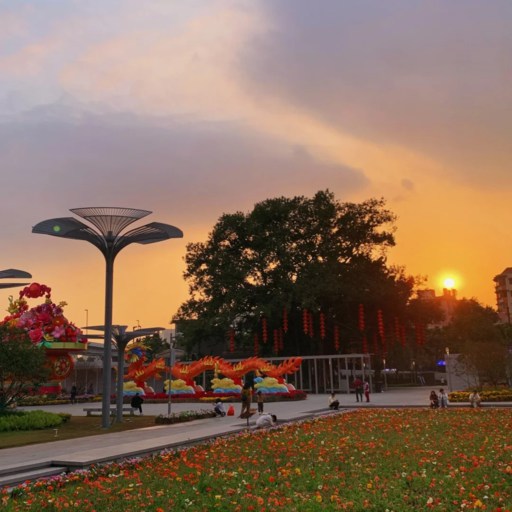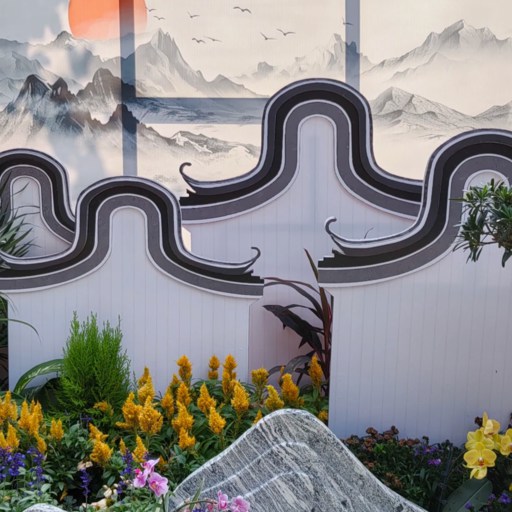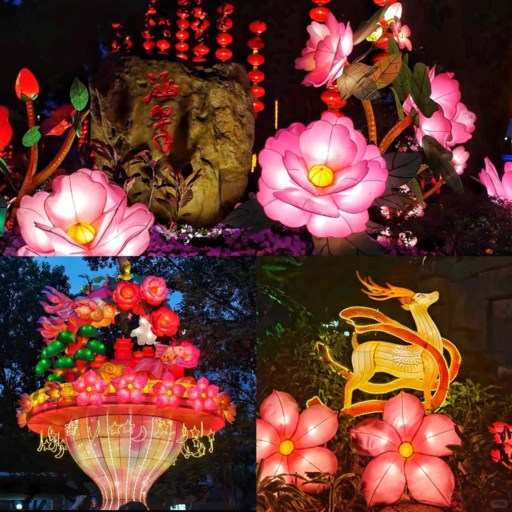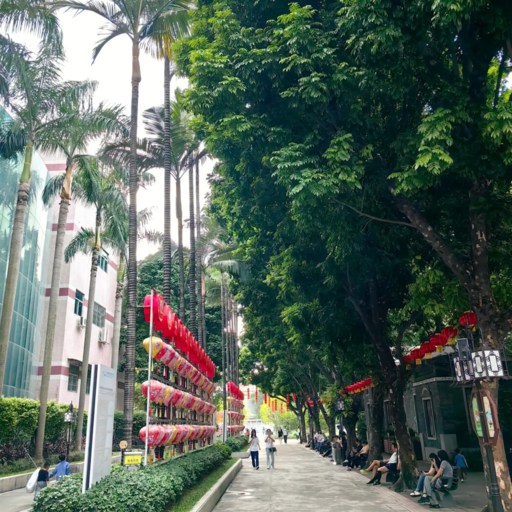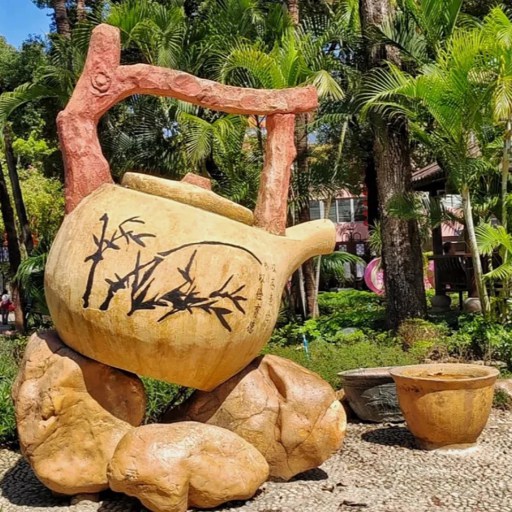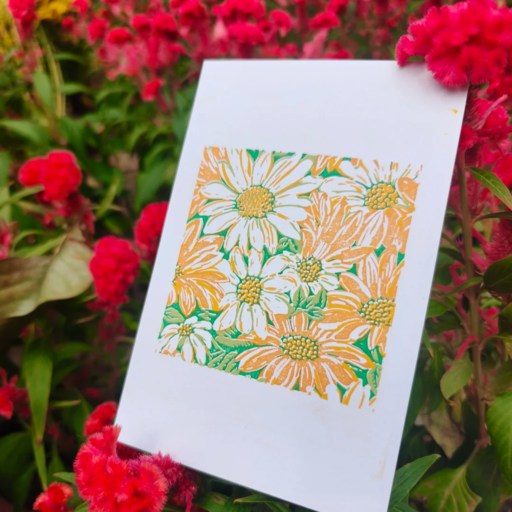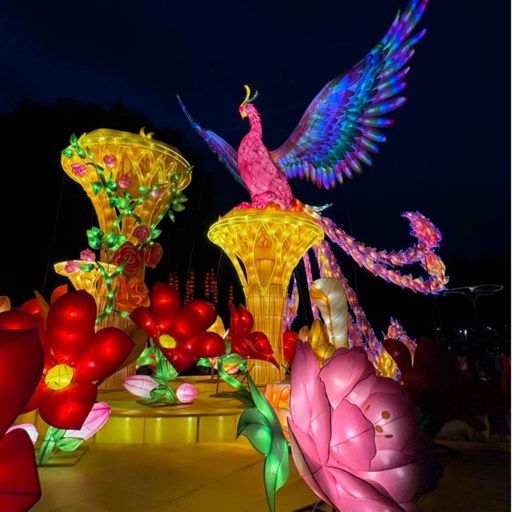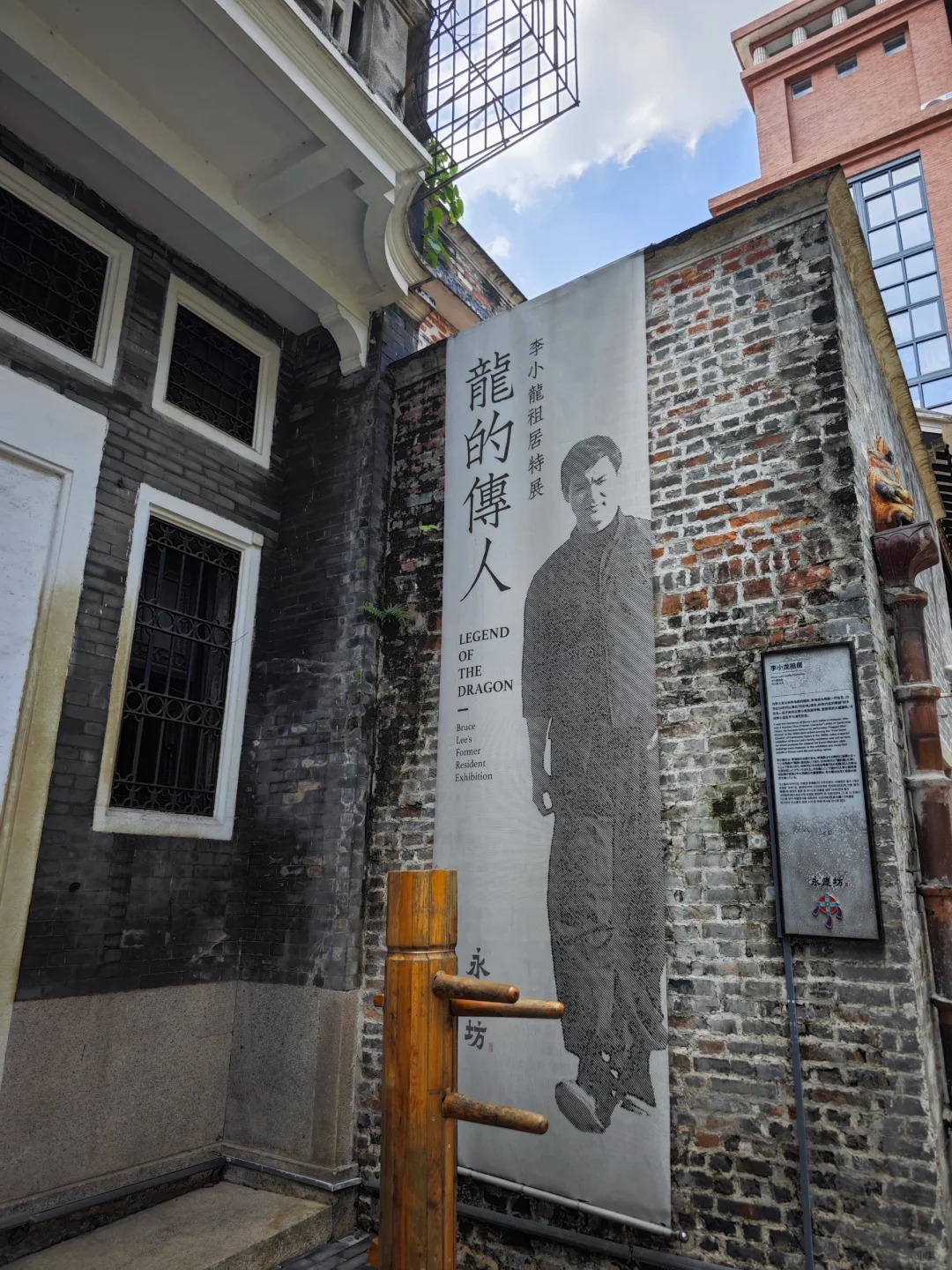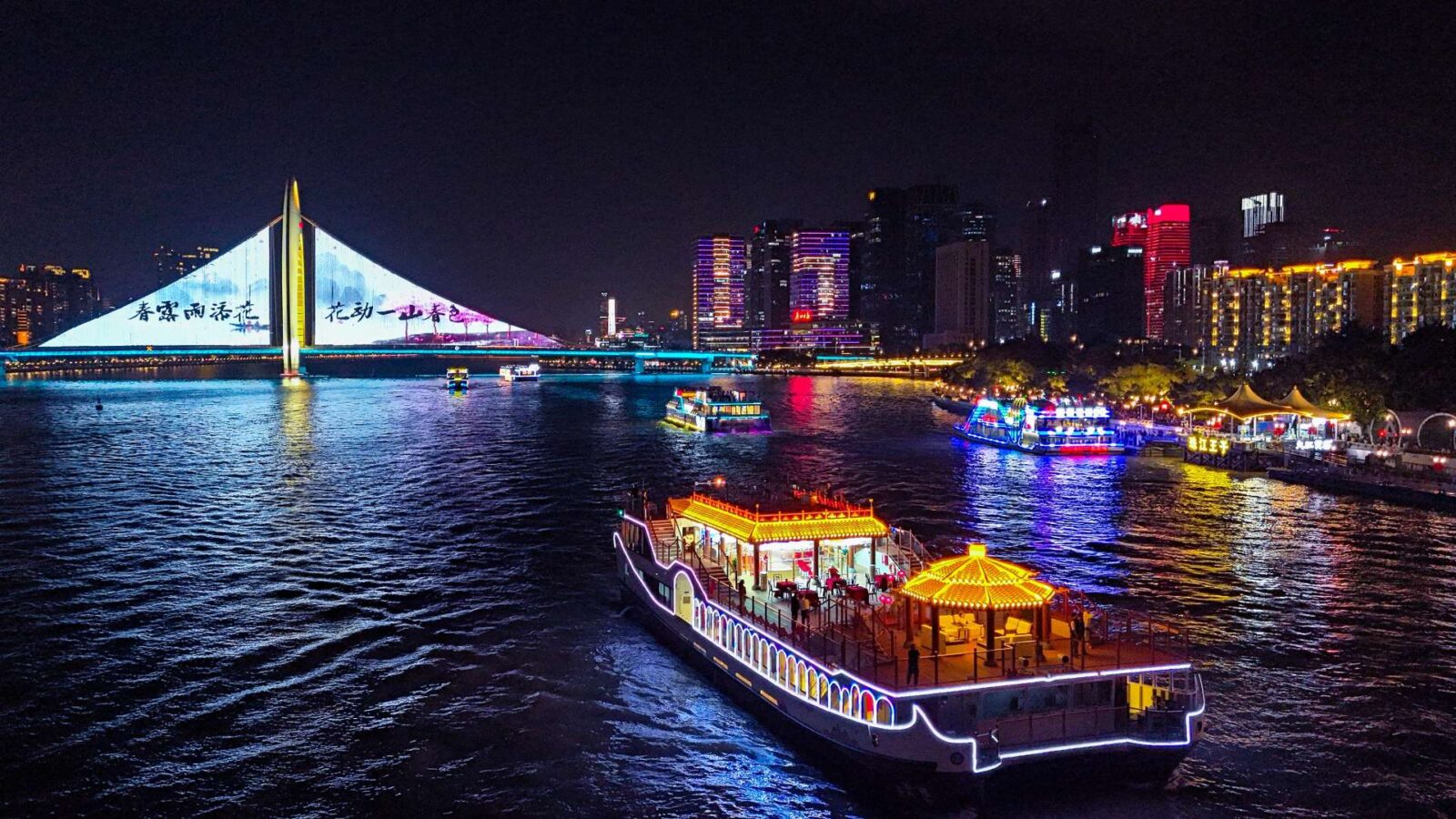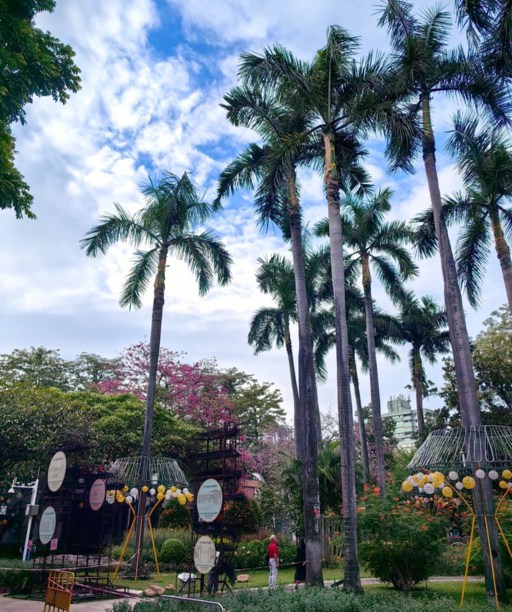
Guangzhou Cultural Park
Located between Shamian Island and the Pearl River, the Guangzhou Cultural Park occupies 83,000 square meters of gardens and yards with open-air performance stages. It is one of those spots where you can feel the pulse of Guangzhou — opera wafting from a pavilion, the scent of roasted chestnuts at the gates, kids darting after bubbles beneath banyans.
The park combines history and pleasure: Han City is a reproduction of scenes from the Han Dynasty, with costumed actors and wax figures; there’s Cantonese opera and acrobatics in central square, as well as an evening magic show. Each season is also an excuse to come back — the Spring Flower Fair, the Mid-Autumn Lantern Festival or the glittering Chrysanthemum Show that turns lush gold park’s color. And there are few places in which the spirit of Guangzhou is so fully manifest.
Quick Facts about Guangzhou Cultural Park
| Location | Liwan District, near Shamian Island and Pearl River |
| Metro | Cultural Park Station (Line 6 & Line 8) Exit D |
| Entrance Fee | Free Entry |
| Opening Hours | 05:00 – 22:00 daily |
| Best Time | Spring Flower Fair & Autumn Chrysanthemum Show |
| Local Tip | Visit after sunset for lantern view |
A Park Rooted in Guangzhou’s Living History
- Plants in Guangzhou Cultural Park
- Dusk of Guangzhou Cultural Park
How Guangzhou Cultural Park Was Born from a City in Change
“The history of the Guangzhou Cultural Park dates back to the 1950s, when Liwan District did not look anything like it does today as a busy neighborhood. The old town was still restive then, in the aftermath of the war — the narrow lanes, ships burned from end to end and a faint smell rising from river mud left by the Pearl River. The city government wanted a space that was not so much about rebuilding as it was about reminding. So on the site of those old docks and warehouses they laid out a new kind of park — part exhibition ground, part open-air classroom. The first exhibitions here, locals say, featured porcelain and silk embroidery and carpentry produced by the finest craftsmen in Guangdong province, it has been a story of recovery — a restoration of something that may outlast us.
Stepping through it today, you’d never know that this placid spot once symbolized industrial revitalization. Some of the red pavilions and stone bridges, even some of the uneven paths, still give evidence that 600 friends once tarried there. I saw a TripAdvisor review that nailed it: “You don’t just walk here — you step through Guangzhou’s timeline.” And it’s true. Older couples still reminisce about how the Flower Fair was a modest little local market in those days. Today, teenagers film short videos near the same archways where their grandparents stood waiting for opera tickets. And somewhere in the air, under the banyan trees, you can still feel what this park used to mean — a place where the city learned to breathe again. That’s why everyone I know who lives there tells me: if you want to understand Guangzhou, go to Guangzhou Cultural Park.
Lingnan Aesthetics: The Soul Behind Guangzhou Cultural Park
And if the park’s roots are historical, its spirit resides in Lingnan culture at Guangzhou Cultural Park. You notice it as soon as you catch sight of the roofs — curved like waves about to crash, and with ridges adorned with small porcelain figures frozen mid-dance. The Lingnan style isn’t large; it’s small, and specific. Peek inside and you will see gray plaster dragons twining around beams, green bricks that cool from the shade of bamboo and carved windows that frame pools where goldfish ripple sunlight. There is always the smell of wet stone and gardenia after a quick rainfall, which lingers longer than it should.
What’s special is how the old integrates with the living. Youngsters now play hide-and-seek amid them, while they were once cut and sculpted by artisans into those gray, volcanic sculptures using lime and shell ash. The fall blend of art and everyday feels natural, as if the park were proactively resisting museumification. I once saw an old man run his finger over the outline of a bird carved into a wall — the hand couldn’t help but tremble — as if he were greeting an old friend. That silent, full pause encapsulates the space for me: not just beautiful but very personal. The park does not shout its heritage; it sings it, softly, like an aria caught on the muggy Guangzhou wind.
What to Do at Guangzhou Cultural Park — More Than Just a Walk
- Exhibition in Guangzhou Cultural Park
- Lights in Guangzhou Cultural Park
Flower Fairs, Lantern Festivals, and Cantonese Opera Nights
And should you ever hit the park at the right time, you will understand why attending an event here feels more like taking in shows on a schedule and less like watching as the city unfurls its personality. On the date of Spring Festival, the Flower Fair makes the whole park a living painting. Stalls burst with orchids, bonsai and azaleas; the scent of new citrus from potted kumquats intermingles with fried dough and incense. Somewhere between the courtyards, a lion dance roars to life — drums that rattle in your ribs and confetti released into sticky winter air. It’s sloppy, exuberant and unapologetically Cantonese.
“Grubby” is a word frequently deployed in comments on the many parks at TripAdvisor, which rates this one as “excellent,” along with a more popular choice listed below. “We didn’t intend to spend that much time there, but the lanterns kind of held us captive until closing,” one visitor wrote. I get that. Thousands of paper lanterns illuminate overhead like jellyfish during the Mid-Autumn Festival, and ponds are transformed into beautiful algae bloom. You’ll see couples posing for selfies below the willow reflections, and children screaming “照亮啦! when their lantern lights, an old man selling sugar figurines near the opera stage. By evening, when the troupe of Cantonese Opera begins to tune up, the whole park feels as if it’s sitting somewhere between past and present.
Opera nights are my favorite. The actors are costumed in so much bright color you could take them for walking lanterns. All of their voices — sharp, tremulous — pierce the warm night. Bystanders hum along, merchants interrupt transactions and even tourists stop filming for a beat. That’s just what happens at events here in Guangzhou Cultural Park: they force you to slow down, to forget your schedule, and remember that culture isn’t something you tick off — it’s a feeling that hums under the laughter of the crowd.
Hidden Corners Locals Love — Tea Houses, Chess Tables, and Mural Walls
It’s not all fanfare. When the festivals disappear, this park’s quieter heart comes alive. I favor early mornings — with the dew still on bamboo leaves, and the air smelling faintly of roasted tea and damp stone. Mature men unrolled chessboards on chipped marble tables, their laughter erupting occasionally in the faint clunk of played tiles. In the background, women in pastel qipao putt slowly between banyan trees. This is not a set — it’s simply Guangzhou being itself.
If you’d like to taste the same local calm in its flavors, read Guangzhou Food: Where Dim Sum, Tea, and Street Snacks Tell the City’s Story.
One rainy afternoon, I took shelter under a pavilion near the mural wall, the sort of thing bedecked with peeling paintings of Lingnan opera scenes. Without a word, she gave me paper towels and returned to her sketching. The air was perfumed with wet clay and jasmine from the tea house across the street. Inside, the teapots clicked gently; someone poured longjing with the kind of exactitude that will make you want to learn. Even on the best maps, moments like that don’t show up.
That’s the alchemy of this place: every visit recasts itself. Next time maybe you’ll stumble upon the oil-paper umbrella wall, or the secret corridor where street artists add new marks overnight. Perhaps you’ll sit with your tea and watch the light creep up over the tiles. But these are its corners, and each makes the park more than a tourist stop — they make it a living, breathing Guangzhou story hidden behind every turn in Guangzhou Cultural Park.
Planning Your Visit to Guangzhou Cultural Park
- Street of Guangzhou Cultural Park
- Sculpture in Guangzhou Cultural Park
How to Reach Cultural Park Station Guangzhou — Metro, Bus, or Walk
It’s surprisingly easy to reach Cultural Park Station Guangzhou, which makes the park accessible even for a short city break. The metro connects directly — both Line 6 and Line 8 stop there, and Exit D brings you right to the west gate. If you arrive from the airport, take Line 3 to Kecun, transfer to Line 8, and ride about 25 minutes. Signs appear in English, though a few carry quirky Chinglish like “Welcome into happy cultural garden,” which oddly feels fitting.
If you prefer ground travel, buses 57 and 88 stop streetside at “文化公园.” From Shamian Island, you can walk about ten minutes along the Pearl River promenade, maybe catching a moody sunset or soft Cantonese pop from street musicians. A taxi from Tianhe costs around ¥25–30 depending on traffic, though drivers sometimes take scenic routes, so keep maps ready. Ride or walk instead — taking the metro to Guangzhou Cultural Park drops you into a lively neighborhood filled with dim sum steamers, newspaper stalls, and opera tunes drifting through open doors.
When to Visit and What to Expect Each Season
The park evolves with the seasons, and that’s half the fun. Spring shows off here. The Flower Fair floods every courtyard with color, and the air smells richly of citrus blossoms. Summer arrives slowly, yet the banyan trees spread wide enough to shade most walkways, while koi-feeding kids mirror in the ponds. Autumn ushers in the Chrysanthemum Show; golden and amber blooms edge each path, tagged with fragile hieroglyphics. In winter, the garden glows softly. The Lantern Festival fills the park with warm light, and though it’s cool, the air stays clear and crisp—usually around 16–20°C.
To dodge crowds, come on weekday mornings or just before dusk. Locals already know the secret: between 10 a.m. and 2 p.m., tour groups fill the paths. Arriving early brings calm corners and perfect light for photos. At the park’s north end, a pavilion shifts with each season, reflecting the garden’s living rhythm. No matter when you visit, this pocket of Guangzhou Cultural Park feels alive—changing gently with time yet always breathing its own calm energy.
What to Pack and Photography Tips inside Guangzhou Cultural Park
Comfort matters here. It’s the cobblestone walkways and open plazas that make you walk more than expected, so sneakers always beat sandals. During warmer months, pack mosquito spray and a compact umbrella — Guangzhou’s drizzle often appears without warning. Many TripAdvisor reviewers mention “too many perfect corners to photograph,” and they’re right. Around 8 a.m., golden light bathes the lotus pond, while at 5 p.m., sunset pours over the opera stage, creating silhouettes worth framing.
When photographing people, be polite. Locals rarely object but always appreciate a friendly smile first. Most travelers say the best photos come from spontaneous moments — a vendor adjusting lanterns or a child chasing bubbles near the mural wall. The best photo spots in Guangzhou Cultural Park usually find you, not the other way around. If your camera battery dies, stop by the FamilyMart just outside Exit D to grab a drink and recharge — both literally and figuratively.
Understanding Guangzhou through Its Cultural Park
- Souvenir in Guangzhou Cultural Park
- Night Scene of Guangzhou Cultural Park
Why Guangzhou Is Known for Blending Commerce with Culture
Guangzhou is often called “Little Africa,” and when you spend a morning inside that park, you understand why. Nigerian traders banter with local tea sellers in a patois of Cantonese, Mandarin and English bad enough to make even a linguist’s head spin. Life in the Guangzhou Cultural Park community is a collage — families congregate for picnics by the lotus pond, African traders teach children how to weave together bright-colored threads into bracelets, old Cantonese women argue over orchids and students draw lion statues during art class. It’s not tourism only here; it is coexistence, lived in daily gestures.
If you want to see how this blend of cultures stretches beyond the park, check out this detailed Guangzhou City Tour guide that shows where commerce meets culture across the whole city.
The guangzhou cultural park community life is an analogue of the city’s DNA: entrepreneurial, adaptable, welcoming. Even the pop-ups capture something of Guangzhou’s mercantile spirit — not permanent, but lively shops that hawk woven crafts or calligraphy or imported incense. It’s a microcosm of the Pearl River Delta’s own story: trade colliding with tradition, modernity layered over memory. In a city where commerce usually commands center stage, the park lets remind you that culture is Guangzhou’s oldest trade and it’s still good business today — even if there’s a bit more music in it now.
How Guangzhou Cultural Park Reflects the City’s Global Identity
Gaze out at the city skyline — that twirling ribbon of light called Canton Tower, and Shamian Island’s colonial pastels frozen in time — and you’ll see one image of Guangzhou: ambitious, forward-looking, ready for postcards. But step into the park, and a different picture unfolds quietly. The glamour fades into laughter, while skyscrapers retreat behind spreading banyan leaves. A 2024 Guangzhou Daily report called the park “the city’s social courtyard,” and it truly feels that way. Festivals here belong to everyone — no tickets, no dress code, just shared joy.
The park’s design mirrors Guangzhou’s global character. Pavilions with graceful Lingnan curves stand beside modern art walls. Food stalls selling Turkish flatbreads sit next to clay teapot counters. It feels both local and global, rooted yet open — a living echo of the city’s trade-port history. If Canton Tower shines for the skyline, then Guangzhou Cultural Park glows for its people. The focus turns inward, not upward. Children chase lanterns, expats sketch under trees, and grandparents sing folk songs. And in that moment, you realize: this is Guangzhou when no one is posing for a picture. A city that has learned to rhythmically keep its pulse between the old world and the new.
FAQ about Guangzhou Cultural Park
Q: Is there an entrance fee for Guangzhou Cultural Park?
No ticket stresses here — Guangzhou Cultural Park is completely free. You can walk in for free from dawn to almost 10 p.m. Some temporary exhibits or cultural fairs may have entrance fees of say ¥10-20, but most street and public performances, garden gates are open. It’s one of the only places in this city where you can while away an entire day for next to nothing.
Q: What is the best time to visit Guangzhou Cultural Park?
The locals will tell you that spring and fall are best. The Flower Fair is timed to coincide with Chinese New Year, and in November the Chrysanthemum Show provides illumination. Go early (7 a.m. to 9 a.m.) for soft light and light crowds. Afternoons in the summer can be sticky, so evenings are when it’s more enjoyable to take a walk. At bottom, anytime but the weekend noon rush suits Guangzhou’s rhythm.
Q: Are there restaurants or tea houses inside Guangzhou Cultural Park?
Yes, several. You’ll find traditional teahouses near the opera stage and small cafés close to Han City. Prices range from ¥20–60 per person. Locals favor the dim sum stalls at the south gate — the shrimp dumplings sell out fast. You can also bring your own snacks; picnicking by the lotus pond is allowed and oddly popular among students.
Q: Can foreign tourists join local events at Guangzhou Cultural Park?
Absolutely. Activities held at Guangzhou Cultural Park are open to all. At the larger festivals, volunteers may assist foreign guests to comprehend of the programs. I have seen tourists invited to do paper-cutting or paint lanterns. No special registration required — just get there early, as spaces for workshops fill up fast.
Q: Is Guangzhou Cultural Park family-friendly for kids and elderly?
Yes, it’s designed for both. A wide, dramatic set of shaded walkways and plenty of benches make it manageable for older visitors to get around, and kids enjoy koi ponds, open plazas. Restrooms are available at each gate, and strollers can be rented near Exit D of Cultural Park Station Guangzhou. Families are calmest on weekday mornings.
Q: Are there English signs or guides in Guangzhou Cultural Park?
In most major areas bilingual signs are the rule, though translations can be idiosyncratic (“Enjoy your culture time!” still makes me smile). English tours are hard to find, but apps like Ctrip or WeChat Travel Guide have do-it-yourself routes that you can follow on your phone.
Q: What are some good photo spots in Guangzhou Cultural Park?
What TripAdvisor users say: “23 attractions and scenic spots, including the flower pond with lotus blossoms in summer, the 18 Lingnan courtyards and the mural wall at the east entrance” For golden-hour shots, aim for the opera stage around 5 p.m. or the lantern corridor after sunset. Each trip is different — sometimes the picture of the day finds you first.
Q: What other landmarks can I visit near Guangzhou Cultural Park?
There is also Shamian Island, Chen Clan Ancestral Hall and the Pearl River promenade within walking distance. The hosts is pretty nice, the room is a short metro ride to Canton Tower and Beijing Road Pedestrian Street. Footsore travelers often combine the park with a river cruise at night — an eerily peaceful experience compared to the neon frenzy of the cities.
